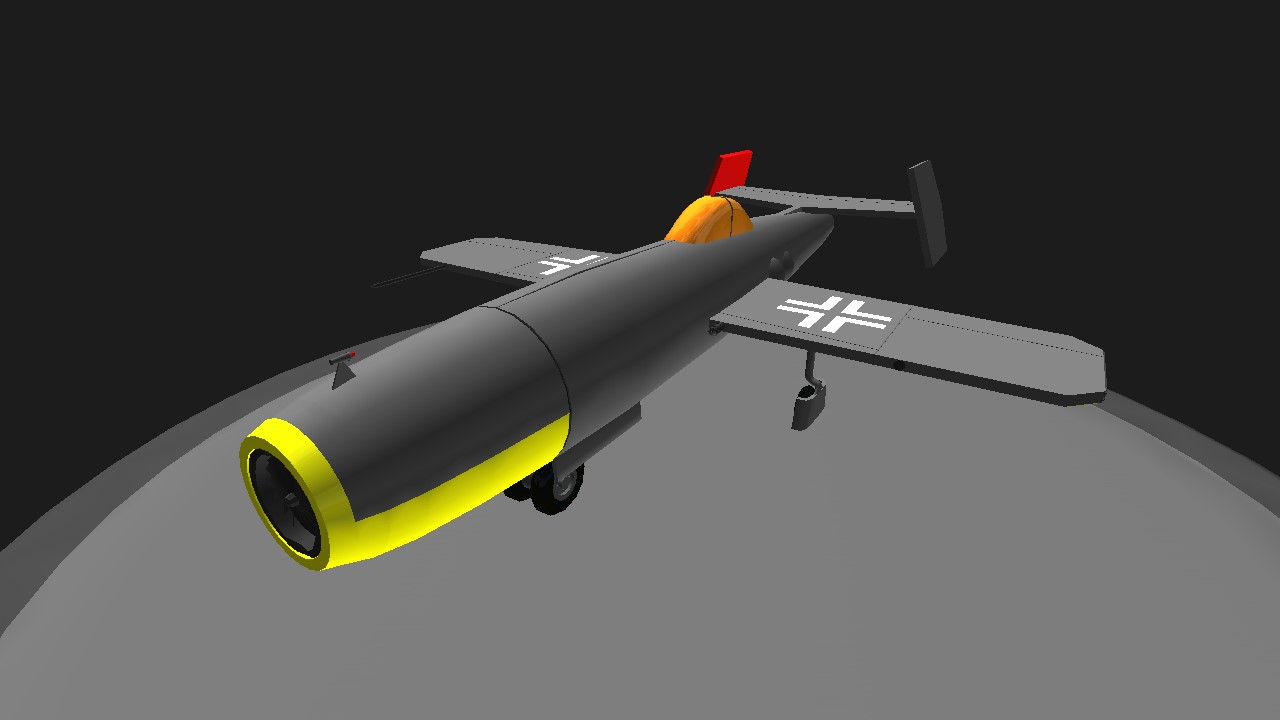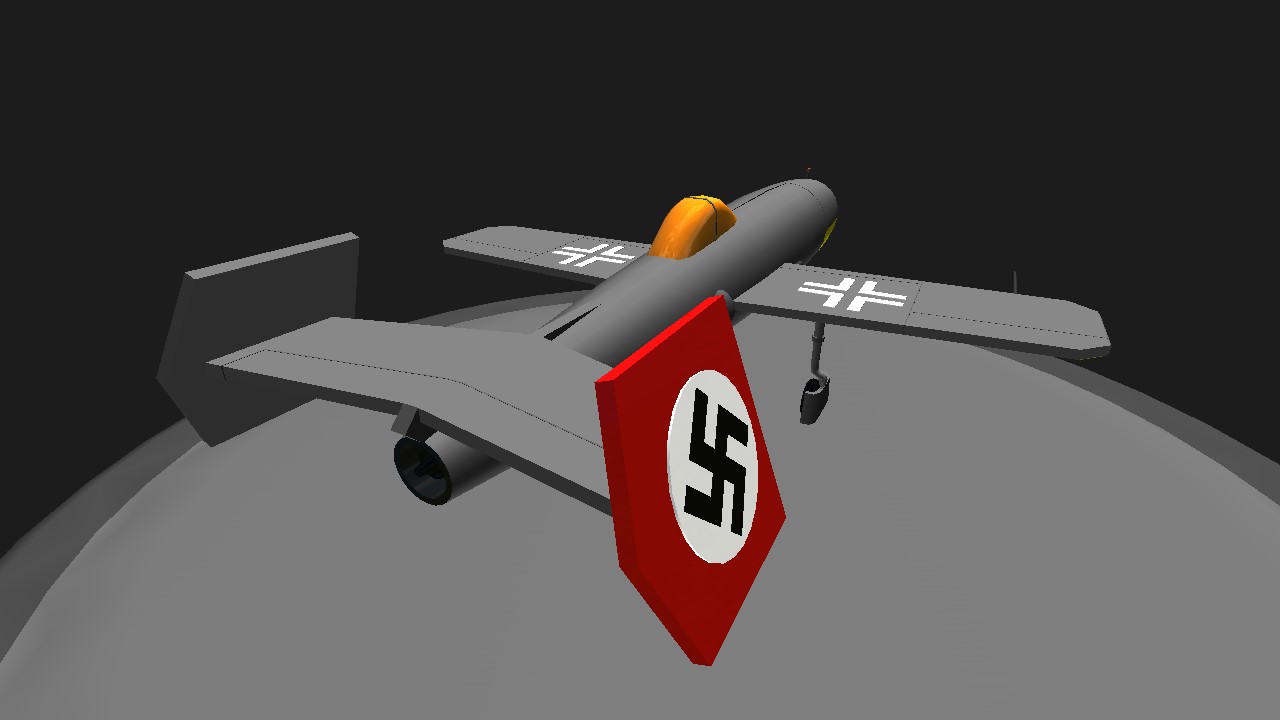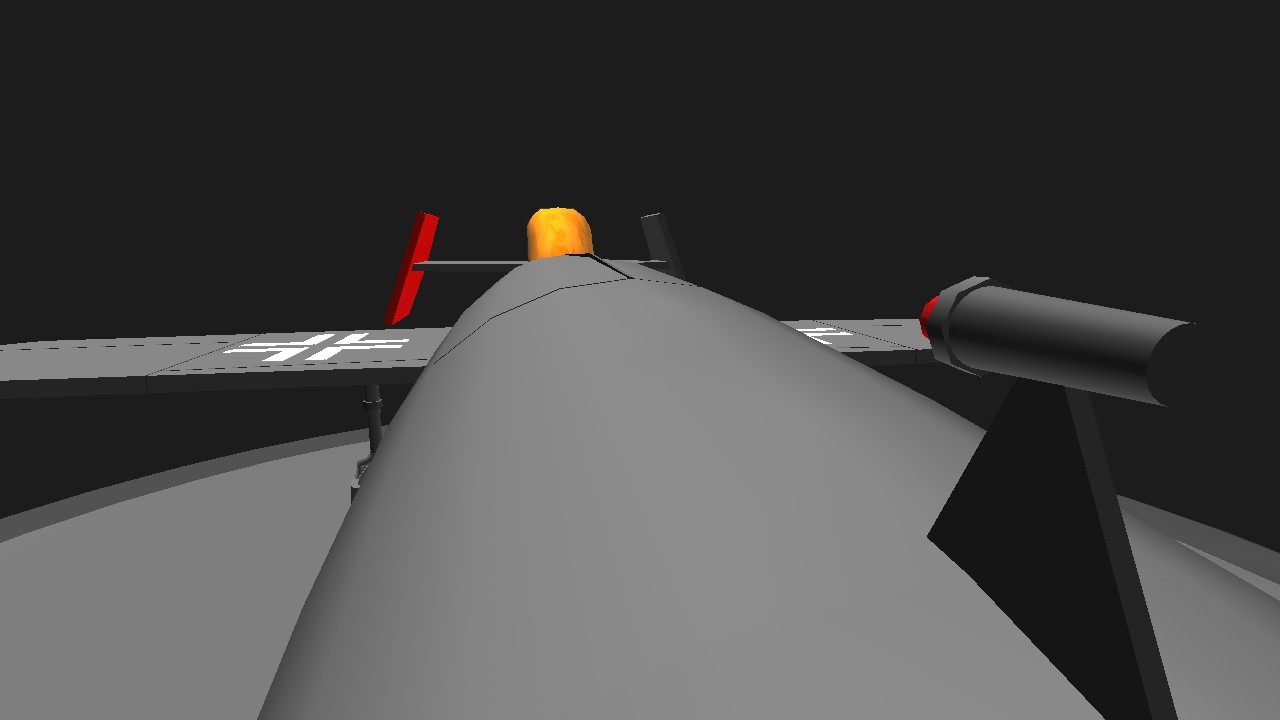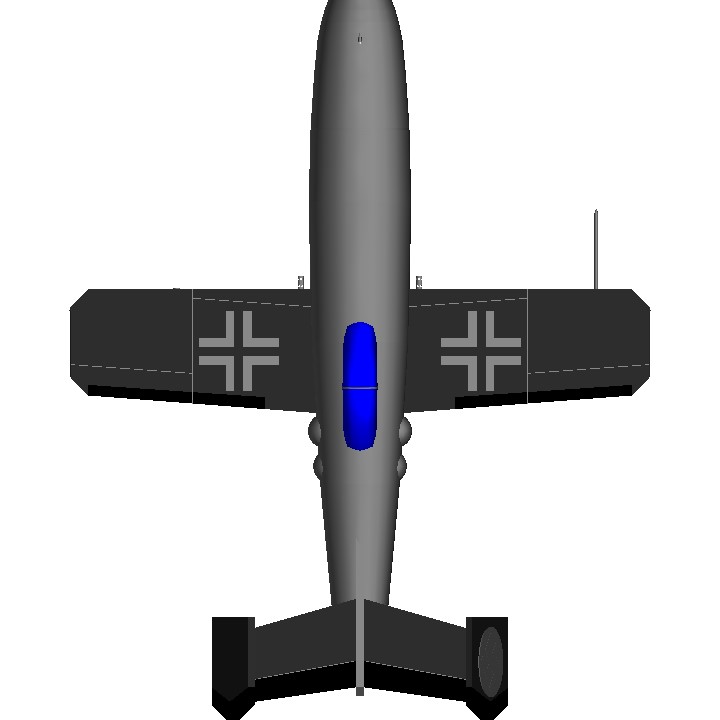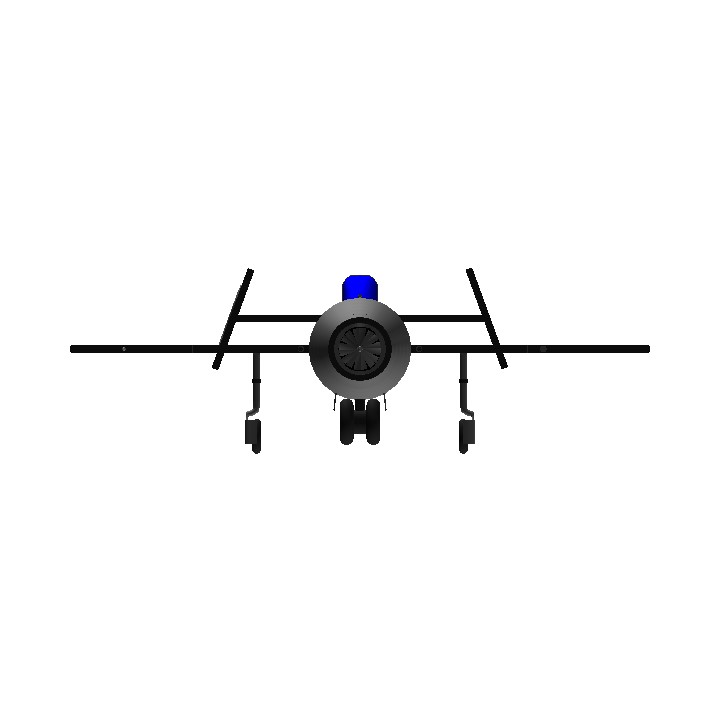109-006 Junkers/Heinkel 006 as Power plant
MK 103 30mm cannons wing root mounted
Werfer-Granate 21 Air-to-Air Unguided Rockets
927km/h Top speed
After the World War between the Allied powers, and a six year gap spent peacekeeping across Europe and Northern Africa, the Luftwaffe was in need of an new jet fighter. The RLM issued an order to the five companies, and between the five companies in Germany, Messerschmitt and Arado both began work on a powerful jet fighter using the new 109-006 Junkers/Heinkel 006 as it's powerplant.
By 1951, with the two loosly related projects progressing a year into the drsign phase, Herman Göring ordered the two company design teams to merge to save on time for the aircraft for a possible war with the United States.
Of the two aircraft designed, Messerschimtt's powerplant layout and cockpit layout were used, and Arado's airframe design was used for the new fighter.
After the two teams combined research of their jet, the designing phase continued on time, and the early prototype was completed during the middle of next year. The prototype was flown by Karl Baur from Augsburg to Berlin for a demonstration to high ranking members of the Luftwaffe. Among some of those attending the demonstration were Willy Messerschmitt, Albert Speer, and Herman Göring.
The prototype, in flight, reached well over 927km/h during flight.
After the demonstration of the Prototype to the RLM and Luftwaffe memebers, it was flown to a victory parade over Paris, France.
Within three months after the demonstration, 35 of the Ar 217 were produced for combat testing in South Africa, and another 7 were sent to England to deal with the occasional uprisings.
After the reports of combat testing from Emgland and South Africa came in with resounding success, a batch of around 300 of the Ar 217 A and B series were made, and designs for a C and F series were planned.
With the Ar 217 starting to become the backbone of the Luftwaffe, several of the aircraft were turned into specialty versions. Around 50 of the E-11 version of the Ar 217 had two HWK 109-500 rockets mounted under the primary wings for carrier takeoffs in the Atlantic, and roughly 35 of the F-4 versions had Werfer-Granate 21 Air-to-Air unguided rockets mounted under their wings for air attack in South Africa.
The current version shown, the F-5/R6 has two BR 21 rockets under it's wings, as well as two SC70 bombs next to the rockets. Two MK 103 30mm cannons are mounted inside the winh roots with 600 rounds of ammunition each.
The F-4/R6 saw the most use over England against British and American bombers, using the BR 21s to counter the combat box created by tight flight formations.
Specifications
General Characteristics
- Predecessor 1Prototyp
- Successors 3 airplane(s)
- Created On Android
- Wingspan 26.9ft (8.2m)
- Length 33.4ft (10.2m)
- Height 8.3ft (2.5m)
- Empty Weight 5,783lbs (2,623kg)
- Loaded Weight 8,497lbs (3,854kg)
Performance
- Power/Weight Ratio 2.777
- Wing Loading 40.9lbs/ft2 (199.9kg/m2)
- Wing Area 207.5ft2 (19.3m2)
- Drag Points 3621
Parts
- Number of Parts 135
- Control Surfaces 8
- Performance Cost 496

